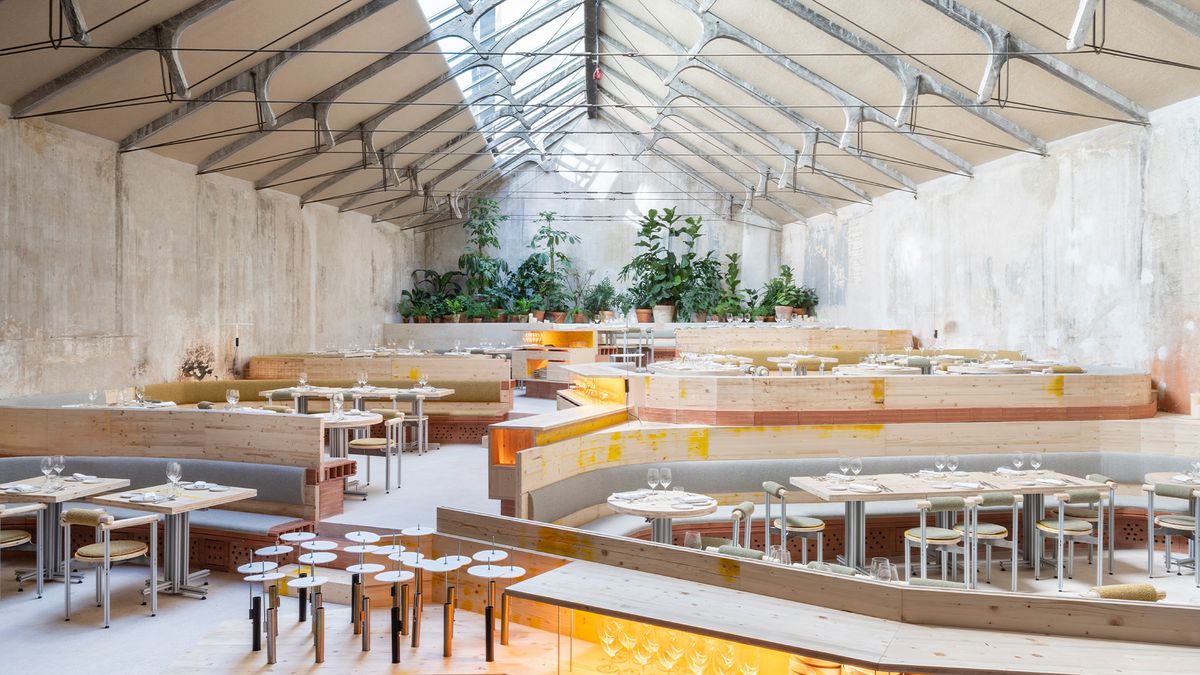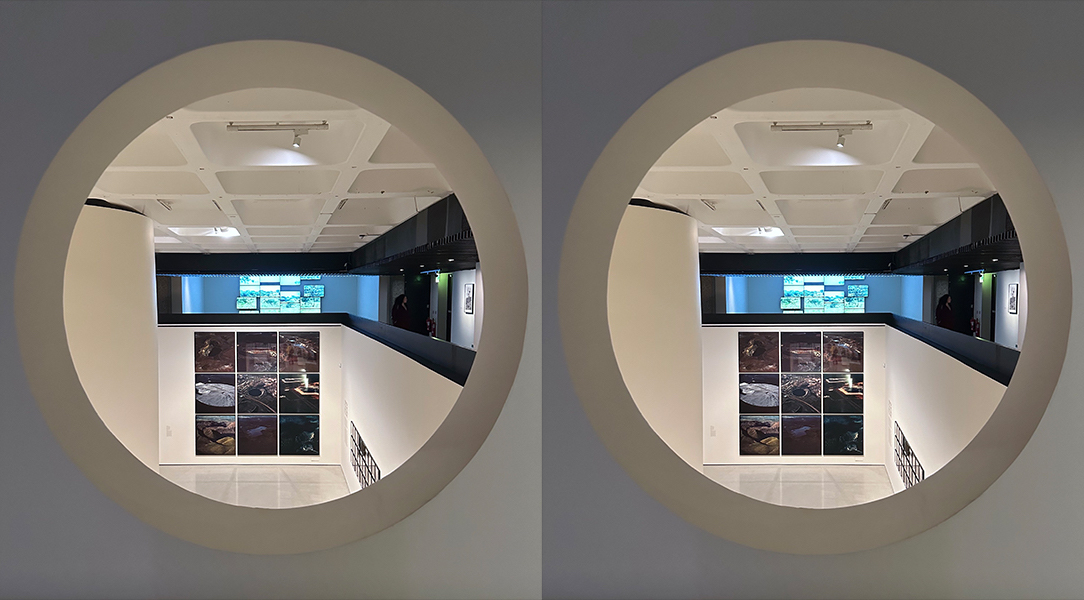Victory Through Air Power III (1943)
2021 - Installation (Installation)
93 x 132 x 4 cm
Wendy Cabrera Rubio
Victory Through Air Power III (1943) by Wendy Cabrera Rubio is part of a series of quilted maps that reproduce different scenes from the eponymous film. Victory Through Air Power the film is an animated history of aviation produced by Walt Disney, and likely one of the first educational and documentary films using animation. Disney’s political agenda, specifically towards Latin America, has played an important role in Cabrera’s practice. This work is not only representative of the artist’s research-based practice. As in many of her hand-crafted pieces combining schematic maps and landscapes with cartoon-like characters, Cabrera also questions traditional didactic displays as well as the exhibition apparatus by turning the art, its didactic labels and random spectator—an exotic bird keeping an eye on his bananas—into the props of a larger staged situation. The series of works Cabrera produced in response to the film also takes inspiration from the six mural paintings that Mexican artist and anthropologist Miguel Covarrubias (1904-1957) painted on the occasion of the 1939 Golden Gate International Exhibition in San Francisco, titled Pageant of the Pacific . Rather than tracing a territory, Covarrubias’s mural paintings celebrated the cultures of the Pacific by putting forward the cultural and economic relations between continents in which the ocean played a major role. Following Covarrubias’s lead, Cabrera transposes his artistic and didactic exercises in anthropological mapping, to the concurrent historical context: the political map of World War II. As suggested by its title and its ideologically charged original referent, Victory Through Air Power III (1943) points to war propaganda against the Japanese as embodied by the supposed accessibility of popular culture and educational films.
Wendy Cabrera Rubio is part of a generation of artists that has been invested in revisiting the history of Mexican arts and crafts with a multidisciplinary and pedagogical approach. Her practice explores the production and distribution of images; using strategies such as appropriation and performance, Cabrera condenses high and low, arts and crafts, history and storytelling. Her work frequently consists of bi-dimensional and three-dimensional quilted objects, cartoon-like characters and/or landscapes made of felt, that stage different narratives (often as a puppet theater) influenced by the educational television programs from the first half of the 20th century. Among the recurrent topics in her work are the concept of the so-called Pan-American history and its relation to North American interventionism in Latin America as embodied by the cultural industries, particularly in Walt Disney’s productions. In this vein, Cabrera’s practice critically addresses the ideological aspects of identity politics.
Colors:
Related works sharing similar palette

© » KADIST
Leslie Shows
Human Quarry is a large work on paper by Leslie Shows made of a combination of acrylic paint and collage...

© » KADIST
Marcelo Cidade
2014450 Hayes Street (excavation site) by Marcelo Cidade is a large scale photograph documenting the artist’s excavation of a parking lot located at 450 Hayes Street in San Francisco, a former section of the city’s Central freeway and current condominium site...

© » ARTS EQUATOR
The working processes of artists: Sabrina Poon | ArtsEquator Thinking and Talking about Arts and Culture in Southeast Asia Articles April 27, 2020 Singaporean filmmaker Sabrina Poon, better known as Spoon, talks about her work and the value of storytelling by breaking down three of her short films – Sylvia , Hello Uncle and Pa ...

© » SLASH PARIS
Romain Best — Coulissements par frictions — Frac île-de-france, le Plateau — Exposition — Slash Paris Connexion Newsletter Twitter Facebook Romain Best — Coulissements par frictions — Frac île-de-france, le Plateau — Exposition — Slash Paris Français English Accueil Événements Artistes Lieux Magazine Vidéos Retour Romain Best — Coulissements par frictions Exposition Installations, sculpture, techniques mixtes Romain Best, Coulissements par frictions, 2023 © Romain Best Romain Best Coulissements par frictions Encore 27 jours : 9 novembre 2023 → 7 janvier 2024 Présenté dans la Project Room du Plateau, Romain Best est né en 1995 à Lyon...

© » KADIST
Asli Çavusoglu
2020In the exhibition Pink as a Cabbage / Green as an Onion / Blue as an Orange , Asli Çavusoglu pursues her work on color to delve into an investigation into alternative agricultural systems and natural dyes made with fruits, vegetables, and plants cultivated by the farming initiatives she has been in touch with...

© » THEARTNEWSPER
Louvre raises ticket prices by 30% in Olympics year Art market Museums & heritage Exhibitions Books Podcasts Columns Technology Adventures with Van Gogh Search Search Museums & Heritage news Louvre raises ticket prices by 30% in Olympics year The price increase will help to subsidise free entry for some visitors and regulate crowd size Gareth Harris 12 December 2023 Share The museum's last ticket raise occurred in 2017 Photo: Inge Knoff via Flickr The Musée du Louvre in Paris is increasing its basic ticket price from €17 to €22 from 15 January as part of a plan to support free admission programmes for some visitors...

© » KADIST
Elisheva Biernoff
2009In her recent work, Biernoff is interested in investigating fictions and fantasies embedded in the remnants of consumer culture (for example magazines) or through ephemera such as postcards and old photographs...

© » KADIST
Christopher Badger
2011Drowned Wood Standing Coiled (2011) consists of two sculptures, inextricably linked...

© » KADIST
Yuyan Wang
2022One Thousand and One Attempts to Be an Ocean by Yuyan Wang reflects on the experience of not being able to see the world with depth perception...











